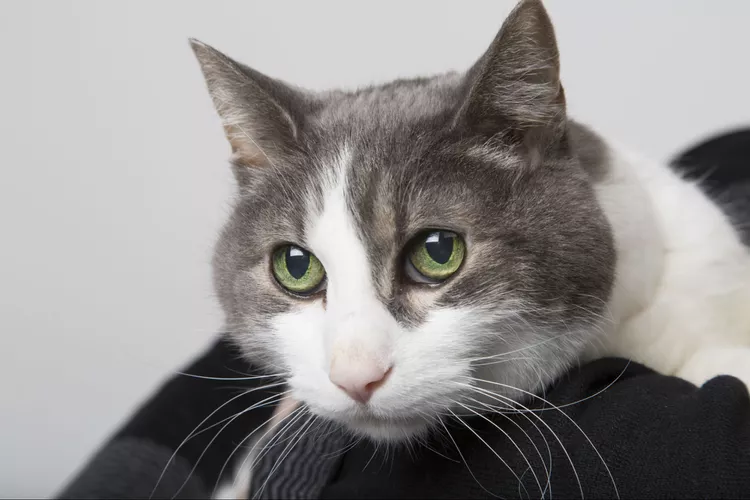How to Train Your Cat to Stop Urine Marking

A cat urinating outside the box can be marking behavior, where a cat feels the need to mark its territory. But there are some underlying health conditions which may cause a cat to urinate outside the litter box and some environmental causes as well.
If this behavior has happened more than once or twice, you may want to bring your cat to the vet to rule out any health issues. If it is, in fact, marking behavior, there are steps you can take to curb it.
Marking Their Turf
Cats use urine to mark territory that’s important to them. Cats often get along quite well until they reach social maturity between 2 to 4 years of age. House-soiling usually involves squatting and depositing urine or feces on a horizontal surface, while urine marking tends to target vertical surfaces.
However, cats can urine-mark on either horizontal or vertical surfaces. Intact male cats are the more typical culprit for urine-spraying, but neutered cats of either sex can decide to baptize the house.
Check the Litter Box
Cats will snub the litter box if it’s in the wrong spot (too near food or sleeping spots); if it's not clean, or sometimes when they have to share with another cat. They may not want to “go” after another kitty or want a different box for solids and another for liquids.
Cats also have very specific preferences for the types of box filters or surfaces, and sometimes the box may be too small to accommodate a big-tailed feline.
Reduce Stress
Spreading the scent of urine around actually helps lower cats' stress levels. Cats like routine and anything that disrupts their normal day-to-day could put their tails in a twist. That could be anything from new drapes, a stray cat that patrols outside the window, or even your work schedule being unpredictable.
In the spring when stray cats go into heat, the scent and sound can prompt indoor cats to become more stressed and increase territorial marking.
In addition, stress can make any medical or behavioral problems worse. So whether your cat’s issue has to do with health issues or strictly territorial marking, a stress-reduction program should help.
Use Feliway and Rescue Remedy
If you have more than one cat, your cats may be at the age when they’ve reached social maturity and may be jostling for position within the household. The Feliway synthetic pheromone can be helpful because it signals the cat that its environment is safe. Rescue Remedy also works for a percentage of cats for reducing stress.
Eliminate Odor and Create New Associations
Pay attention to where your cat urine marks. A urine detector or black light should make urine glow, so you can clearly see any soiled areas. Clean thoroughly with an odor neutralizer product such as Anti-Icky-Poo, which eliminates the odor that draws cats back to the scene (and scent) of the crime. Ammonia and bleach also work well. The goal is to remove the odor so the cat doesn't think it's OK to "go" there again.
Next, change the association of the place by placing toys, a cat bed, or food bowls right on top of the spot. Cats won’t want to spray where they play, sleep, or eat. Spraying the Feliway on the inappropriate spot also can deter a repeat.
Add Another Litter Box
With multiple cats, you may need to coddle twice as much (or more). Offer at least one litter box per cat, and space these in different parts of the house. Make sure they are extra big because some cats just like the added space to maneuver.
Similarly, provide scratching objects and resting places for each cat in a variety of places throughout the home. Extra vertical space can allow cats to climb and get away from each other, while each “owns” its own resting spot. Single-cat shelves (only space for one cat) can keep cats from having to share.
Problems and Proofing Behavior
A number of health issues can prompt urinating outside the box, so a trip to the vet is in order if you can't stop the spray.
Kidney disease and diabetes can increase the volume of urine so the cat can't reach the box in time.
Feline lower urinary tract disease (FLUTD) can be caused by bladder stones, crystals, bacterial infection, or cancer that creates bladder inflammation (cystitis). Cystitis hurts and makes cats feel like they need to “go” more often. Sometimes they’ll associate the litter box with discomfort and look for other places to urinate.
On top of that, 60 percent of these cases are idiopathic—no known cause—making the medical condition hard to treat. Idiopathic cystitis signs tend to go away on their own within about five to seven days but can recur especially during stressful situations.